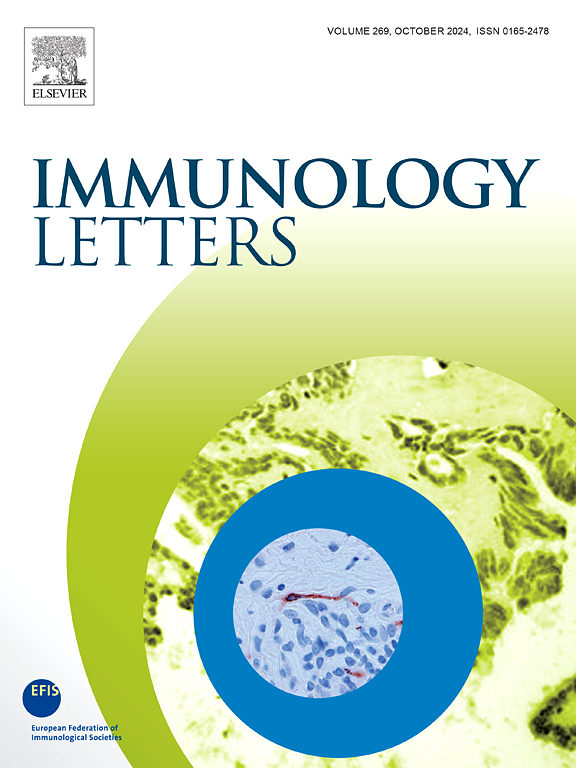Reassuring humoral and cellular immune responses to SARS-CoV-2 vaccination in participants with systemic sclerosis
IF 3.3
4区 医学
Q3 IMMUNOLOGY
引用次数: 0
Abstract
Individuals with systemic sclerosis (SSc) are particularly susceptible to SARS-CoV-2 infections, yet it remains to be determined if they generate humoral and cellular responses comparable to controls following SARS-CoV-2 vaccinations. Herein, we collected blood and serum after second, third, and fourth SARS-CoV-2 vaccinations in patients with SSc and controls. Following each dose, participants with SSc mounted comparable serum anti-RBD IgG, anti-RBD IgA, and spike-specific CD4+ and CD8+ T cell responses to those found in controls. At 3 months post dose 2, the frequencies of Th1, Th2, Th17, and Treg spike-specific CD4+ T cells in participants with SSc did not differ from controls. At 2–6 weeks post dose 3, participants with SSc displayed reduced frequencies, but not numbers, of Th17-polarized spike-specific CD4+ T cells. Thus, participants with SSc did not display significantly weaker humoral or cellular responses to SARS-CoV-2 vaccination than controls, enabling reassurance of vaccine immunogenicity in participants with SSc.
系统性硬化症患者对 SARS-CoV-2 疫苗接种的体液和细胞免疫反应令人放心。
系统性硬化症(SSc)患者特别容易受到 SARS-CoV-2 感染,但他们在接种 SARS-CoV-2 疫苗后是否会产生与对照组相当的体液和细胞反应仍有待确定。在此,我们收集了SSc患者和对照组接种第二、第三和第四次SARS-CoV-2疫苗后的血液和血清。每次接种后,SSc 患者的血清抗 RBD IgG、抗 RBD IgA 以及尖峰特异性 CD4+ 和 CD8+ T 细胞反应与对照组相当。剂量 2 服用后 3 个月,SSc 患者的 Th1、Th2、Th17 和 Treg 穗特异性 CD4+ T 细胞的频率与对照组没有差异。在剂量 3 服用后 2-6 周,SSc 患者的 Th17 极化尖峰特异性 CD4+ T 细胞频率降低,但数量没有减少。因此,与对照组相比,SSc 患者对 SARS-CoV-2 疫苗接种的体液或细胞反应并没有明显减弱,从而保证了 SSc 患者的疫苗免疫原性。
本文章由计算机程序翻译,如有差异,请以英文原文为准。
求助全文
约1分钟内获得全文
求助全文
来源期刊

Immunology letters
医学-免疫学
CiteScore
7.60
自引率
0.00%
发文量
86
审稿时长
44 days
期刊介绍:
Immunology Letters provides a vehicle for the speedy publication of experimental papers, (mini)Reviews and Letters to the Editor addressing all aspects of molecular and cellular immunology. The essential criteria for publication will be clarity, experimental soundness and novelty. Results contradictory to current accepted thinking or ideas divergent from actual dogmas will be considered for publication provided that they are based on solid experimental findings.
Preference will be given to papers of immediate importance to other investigators, either by their experimental data, new ideas or new methodology. Scientific correspondence to the Editor-in-Chief related to the published papers may also be accepted provided that they are short and scientifically relevant to the papers mentioned, in order to provide a continuing forum for discussion.
 求助内容:
求助内容: 应助结果提醒方式:
应助结果提醒方式:


